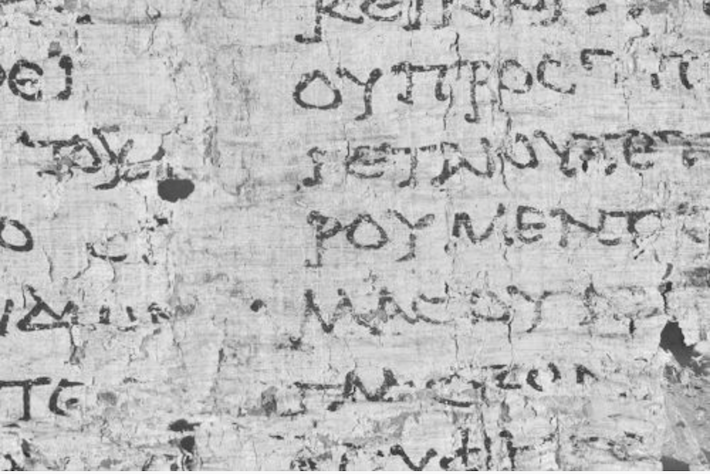 NAPLES, ITALY—Graziano Ranocchia of the University of Pisa and his colleagues have used infrared and ultraviolet optical imaging, thermal imaging, tomography, and artificial intelligence to decipher text on pieces of charred papyrus recovered from Herculaneum, a Roman town destroyed by the eruption of Mount Vesuvius in A.D. 79, according to a Live Science report. Some of the fragments, which have been held at the National Library of Naples, belong to a scroll containing a work called “The History of the Academy” by the Epicurean philosopher Philodemus of Gadara, who lived from about 110 to 30 B.C. In this work, Philodemus offered details about the life of Plato, a Greek philosopher who lived in the fourth century B.C., including that he had been buried in a private garden reserved for the Platonic school of the Academy in Athens, near a small shrine sacred to the Muses. Prior to this discovery, it had only been known that Plato had been buried at the Academy, the researchers explained. To read more about the library from the so-called Villa of the Papyri, go to "The Charred Scrolls of Herculaneum."
NAPLES, ITALY—Graziano Ranocchia of the University of Pisa and his colleagues have used infrared and ultraviolet optical imaging, thermal imaging, tomography, and artificial intelligence to decipher text on pieces of charred papyrus recovered from Herculaneum, a Roman town destroyed by the eruption of Mount Vesuvius in A.D. 79, according to a Live Science report. Some of the fragments, which have been held at the National Library of Naples, belong to a scroll containing a work called “The History of the Academy” by the Epicurean philosopher Philodemus of Gadara, who lived from about 110 to 30 B.C. In this work, Philodemus offered details about the life of Plato, a Greek philosopher who lived in the fourth century B.C., including that he had been buried in a private garden reserved for the Platonic school of the Academy in Athens, near a small shrine sacred to the Muses. Prior to this discovery, it had only been known that Plato had been buried at the Academy, the researchers explained. To read more about the library from the so-called Villa of the Papyri, go to "The Charred Scrolls of Herculaneum."
Charred Scroll From Herculaneum Read With AI
